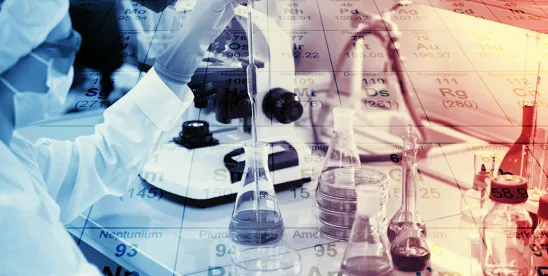Why Regulation Matters in Life Sciences
Life sciences is one of the most heavily regulated industries in the world, and for good reason. Whether you’re developing a new cancer therapy, a pediatric medical device, or even a dietary supplement, regulation determines if and how your product will ever reach the market.
On a larger scale, regulation can affect everything from your fundraising prospects to your exit strategy. It also shapes how your investors view risk and what level of compliance infrastructure you need to build from day one.
Who’s in Charge? The FDA and Beyond
In the United States, the Food and Drug Administration (FDA) is the primary gatekeeper. Within the FDA, products are divided among specialized ‘centers,’ including:
- CBER: Center for Biologics Evaluation and Research
- CDER: Center for Drug Evaluation and Research
- CDRH: Center for Devices and Radiological Health
- CTP: Center for Tobacco Products
- CVM: Center for Veterinary Medicine
- Human Foods Program
Globally, companies will have to contend with local health authorities in the markets in which they do business. While collaboration is increasing amongst many of these agencies, differences remain in standards, timelines, and evidence requirements. For instance, while the FDA may accept surrogate endpoints in rare disease trials, the European Medicines Agency may require longer-term outcome data.
Denise Esposito of Covington underscores the importance of this by stating that “Understanding not just FDA, but how the FDA interacts with global agencies, is essential for companies with international aspirations.”
Regulation Overview
Not every health-related product is subject to FDA oversight, but the line is thinner than many think.
For example:
- A cosmetic becomes a drug if it is marketed as preventing, treating, mitigating, curing, or diagnosing disease or affecting the structure or function of the human body.
- A dietary supplement does not need pre-market approval but is still subject to strict labeling and substantiation requirements.
- A mobile app may be just a fitness tracker unless it claims to diagnose a heart condition, at which point it becomes a regulated medical device.
Jay Reilly of Foley Hoag notes the strategic upside: “Sometimes being regulated gives you legitimacy in the eyes of investors and consumers, even if it means more paperwork.”
Regulation, in other words, is both a cost and a competitive advantage. Investors often conduct regulatory due diligence when evaluating biotech or device companies, because clearance or approval signals quality and lowers reputational risk.
The Drug Approval Lifecycle
Developing a new drug is a marathon, not a sprint.
The process typically unfolds as follows:
- Preclinical Research: Lab and animal studies are done to assess safety, toxicology, and pharmacology.
- IND (Investigational New Drug) Application: This application is submitted before human trials and includes animal data, manufacturing information, and study design.
- Clinical Trials: Clinical Trials are divided into three distinct phases:
- Phase I: Includes ~20–100 participants and is aimed primarily at assessing safety and dosage.
- Phase II: Includes ~100–300 participants and is aimed primarily at testing efficacy and side effects.
- Phase III: This includes thousands of patients across multiple sites and seeks to confirm the effectiveness of monitoring adverse reactions.
- NDA/BLA Submission: The New Drug Application (NDA) or Biologics License Application (BLA) is submitted to request FDA approval.
Special challenges can arise in precision medicine, rare diseases, and biologics, where recruiting sufficient patients or validating biomarkers can be difficult. Delays at this stage can have devastating financial consequences for startups burning through cash.
Generics, Biosimilars, and Litigation Risk
Once a drug is approved, competitors can pursue either generic or biosimilar pathways:
- A generic drug is the same chemically to a brand-name drug in dosage, strength, and intended use.
- A biosimilar is ‘highly similar’ to a biologic, with no meaningful clinical differences in safety or efficacy.
These products expand access and reduce costs, but they also spark litigation wars. Patent disputes, exclusivity fights, and FDA petition battles are common.
For example, so-called ‘pay-for-delay’ settlements, where patent litigation between
brand-name drug companies and generic manufacturers are settled through payment by the brand company and agreement by the potential generic challenger to delay entry into the market for a specified period of time, have been a recurring antitrust issue. The financial stakes are enormous; billions in annual revenue can hinge on the timing of a generic’s launch.
Medical Devices: Clearance vs. Approval
Medical devices follow their own regulatory path, classified by risk level:
- Class I: Low risk (e.g., stethoscopes, bandages). Generally exempt from pre-market review, but not always.
- Class II: Moderate risk (e.g., infusion pumps, powered wheelchairs). Typically requires a 510(k) clearance, showing ‘substantial equivalence’ to a legally marketed device.
- Class III: High risk (e.g., pacemakers, stents, breast implants). Requires Premarket Approval (PMA), backed by extensive safety and effectiveness data.
The difference between clearance and approval matters not just scientifically but financially. A 510(k) pathway might cost a few million dollars and take months, while a PMA can cost hundreds of millions and take years. Howard Carolan of CoapTech underscores this as well: “Bringing a device to market often hinges on whether you can use the 510(k) pathway — it’s faster, cheaper, and can mean survival for a startup.”
Jurisdictional Gray Areas
Some innovations don’t fit neatly into one category. Combination products may involve a drug-device pair (like an asthma inhaler), a drug-biologic, or even a three-way hybrid. The FDA’s Office of Combination Products assigns jurisdiction based on ‘primary mode of action’.
Consumer products can also slip into regulated territory. A cotton swab is just a cosmetic tool unless it is marketed for applying medications to or to take specimens from, a patient. A fitness app is fine, unless it is marketed as diagnosing disease.
As Jonathan Havens of Saul Ewing LLP emphasizes: “The line between consumer products and regulated medical devices is thinner than most entrepreneurs realize.”
This gray zone has become particularly important with digital health and wearables. Investors often overestimate the ease of commercializing apps, only to discover that FDA review can extend both development timeline and budgets significantly.
Policy Shifts and Financial Fallout
Even the best regulatory strategy can be derailed by policy shifts. Recent developments underscore the risk:
- FDA staff cuts: More than 3,500 FDA employees were laid off in 2025, raising concerns about review delays.
- Drug pricing reforms: A ‘Most-Favored-Nation’ executive order requires US patients to receive the lowest global drug price, threatening margins for pharmaceutical firms.
- NIH funding cuts: Billions in terminated research grants have left universities and startups scrambling to replace funding.
Mark Gardner of Gardner Law and Chrysalis Incubator warns that policy changes can impact financial forecasts seemingly overnight and advises companies to keep a very close eye on policy developments.
Navigating the Regulatory Maze With Strategy and Foresight
Regulation may feel like a hurdle, but it is also the mechanism that enables innovation to reach patients safely. Moreover, regulatory compliance can be a competitive advantage: both a barrier to entry for competitors and something that offers legitimacy in the eyes of investors and consumers, alike.
To learn more about this topic, view Life Sciences Regulatory Overview. The quoted remarks referenced in this article were made either during this webinar or shortly thereafter during post-webinar interviews with the panelists. Readers may also be interested in reading other articles about start-ups & entrepreneurship.
This article was originally published here.
©2025. DailyDACTM, LLC d/b/a/ Financial PoiseTM. This article is subject to the disclaimers found here.




 />i
/>i

